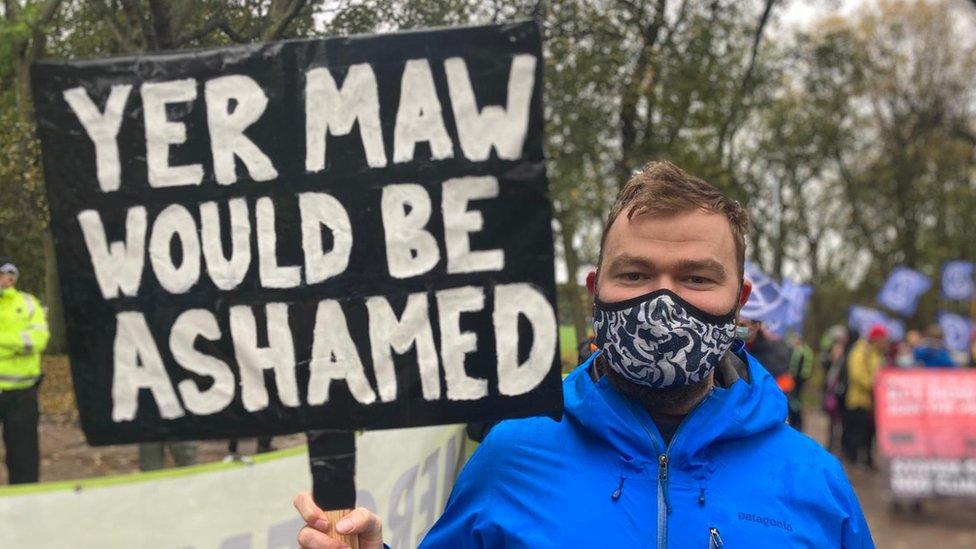What is that big neon sign beside Glasgow's M8?
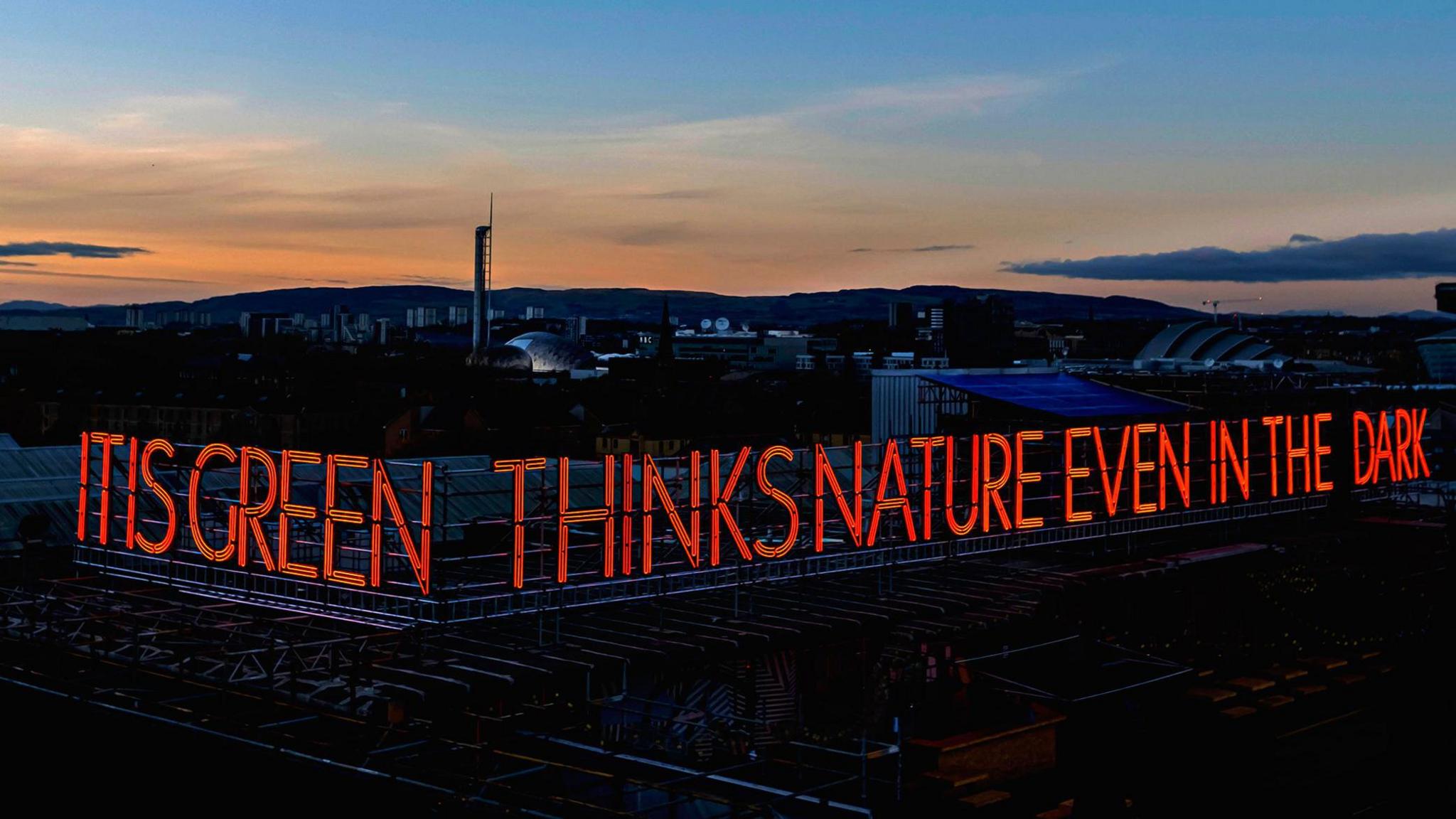
At night the design can be seen for miles across Glasgow
- Published
Above the busiest stretch of road in Scotland, a giant neon sign greets motorists with a bold and puzzling message.
It says: "IT IS GREEN THINKS NATURE EVEN IN THE DARK".
For the past few years the 3m red letters have illuminated Glasgow's skyline.
By now, millions of motorists will have passed the sign at junction 21 of the M8 and undoubtedly thought, "What does that even mean?"
BBC Scotland News has spoken to the artist responsible for the installation to find out more.
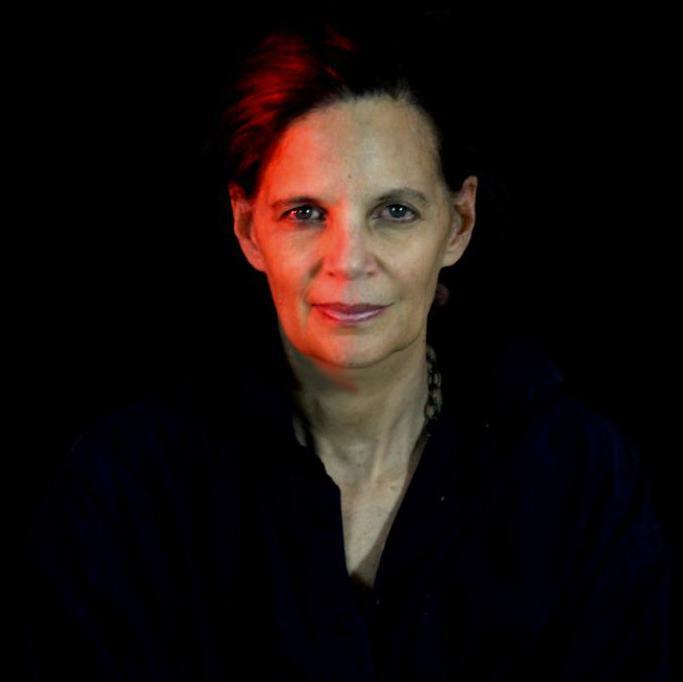
Mary Ellen Carroll is the artist responsible for the striking display
Mary Ellen Carroll is a New York-based conceptual artist and activist and designed the artwork known as "indestructible language" in 2006.
It was first commissioned and installed in New Jersey but was recycled after the 2008 financial crisis.
Over a decade later, a more weather-resistant installation was fabricated in Scotland.
It was put in place in time for COP26, the 2021 UN climate conference, and it has remained an eye-catching part of the city's skyline ever since.
The 3m (10ft) tall letters were constructed from lead-free glass in Edinburgh and installed on a large metal frame on top of the Schoolhouse in Kinning Park - a refurbished Victorian school turned into offices.
This allowed the sign to be visible about a mile away at the SEC, where world leaders and delegates were conducting climate negotiations.
At night the design can be seen much further away in areas like the Botanic Gardens, Bellahouston Park and Queen's Park.
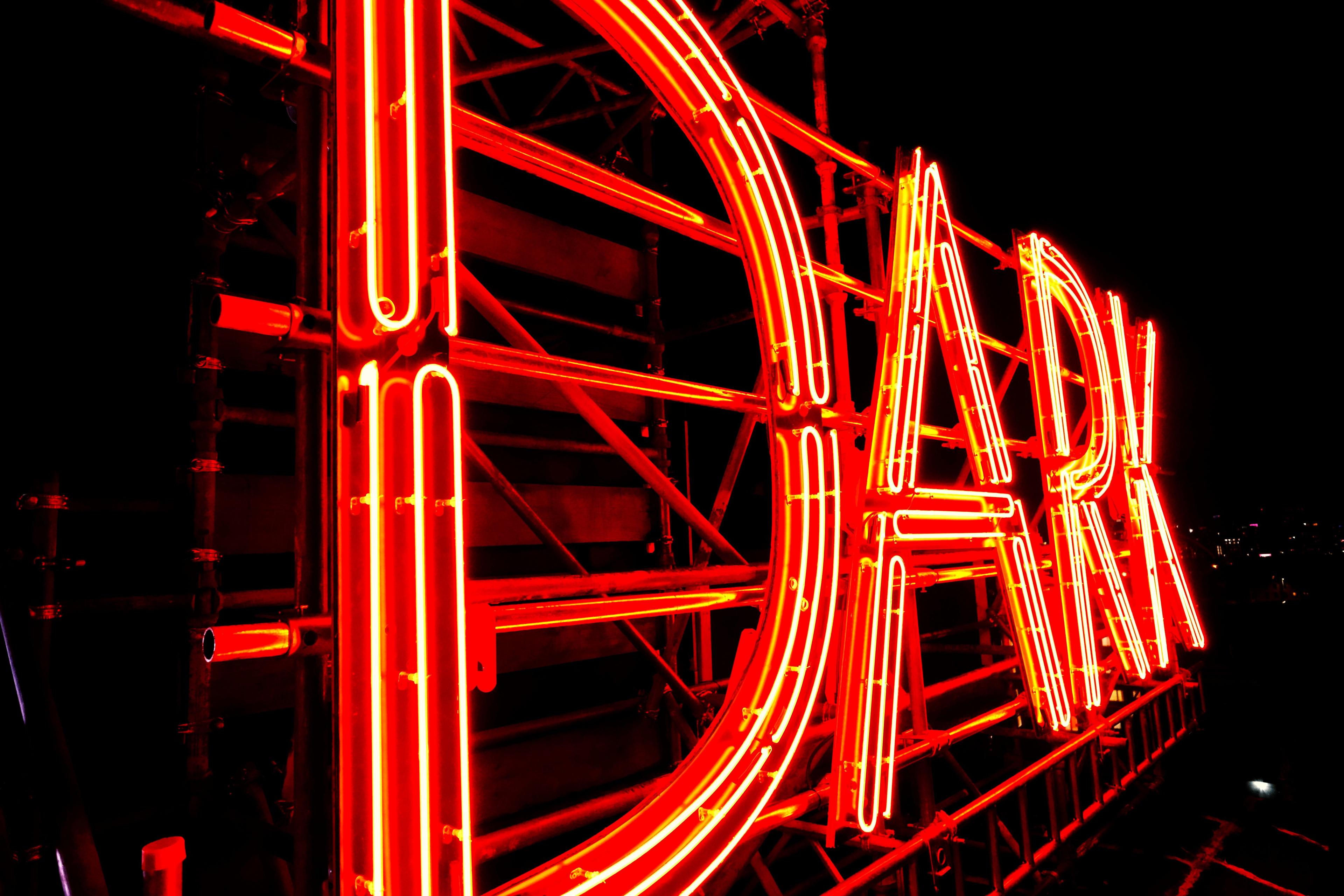
The sign is made of lead-free glass and filled with neon
But what does it mean?
"IT IS GREEN THINKS NATURE EVEN IN THE DARK," is definitely not a coherent sentence, but instead each section has an intended meaning, according to Mary Ellen.
She sat for six months coming up with the words to use in the installation.
"It makes you ask questions," she says.
"IT IS" - is a declaration designed to "assert the urgent and undeniable reality of the climate emergency", she says.
"GREEN" - represents environmental activism and economic transformation and the colour that we connect to nature, according to the artist.
"THINKS" - defines how human thinking is informed in decision-making rooted in scientific understanding and the human ability to reason and act, she says.
"NATURE" - represents the "vast realms of our planet from earth to atmosphere and its intricate ecosystems"
"EVEN" - represents how the climate crisis impacts everyone and represents "a collective shift towards carbon neutrality"
"IN THE DARK" - both visual and rhetorical, it emphasises the artwork requires darkness to be seen but also how climate inaction "may leave us in literal darkness amid potential power outages", according to Mary Ellen
She says the sign also anthropomorphises (gives human characteristics to) nature and suggests that if nature could think, then it is thinking and considering our planet: "It is green", thinks nature, even in the dark.
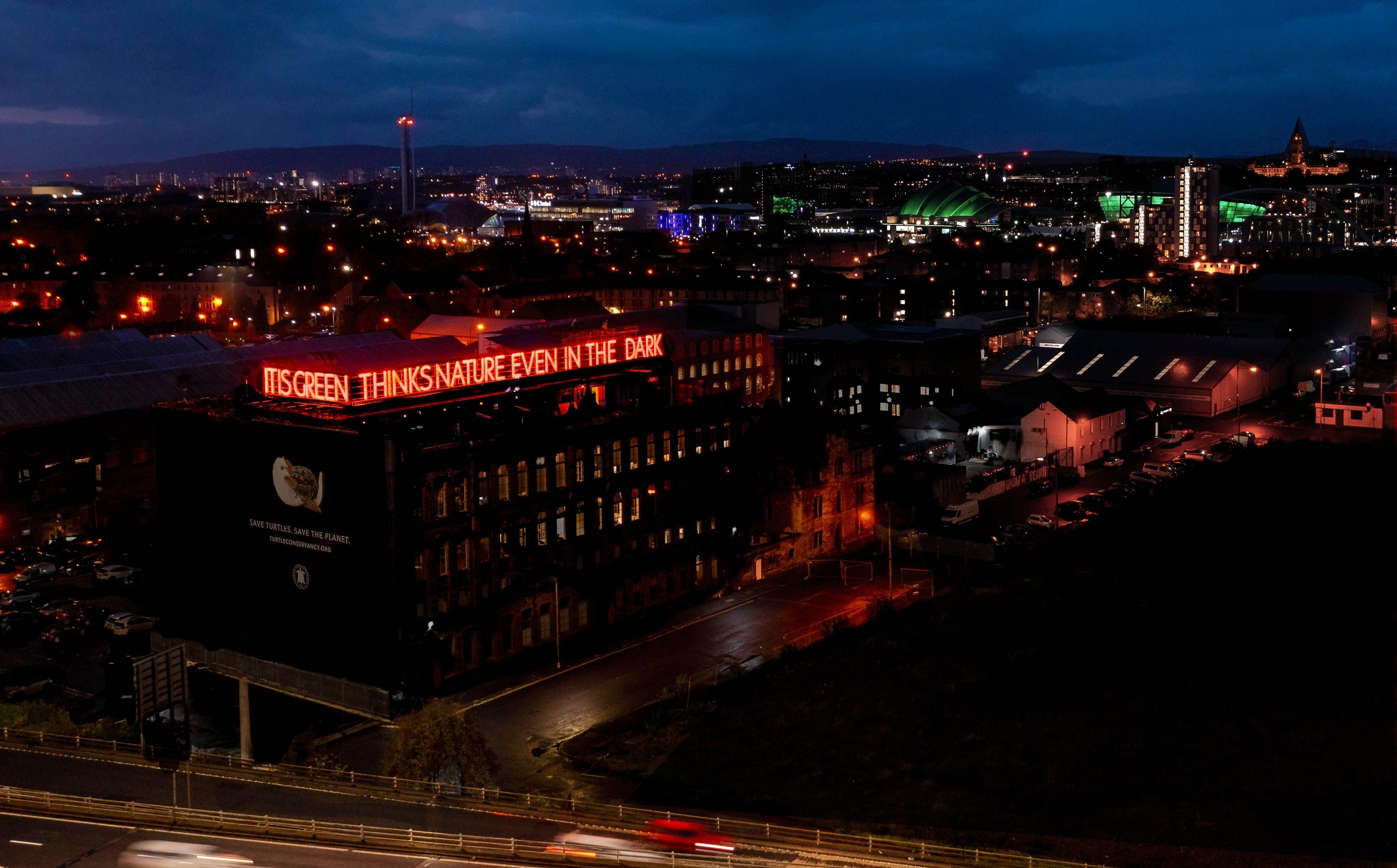
The installation has become the latest feature of Glasgow’s skyline
How did it get there?
Mary Ellen said her team "searched for the place that would steward 'indestructible language' following the temporary location in Jersey City in the industrial landscape there."
They wanted the artwork to be placed on the UN building in New York but talks broke down for various reasons including former US President Donald Trump's administration bringing the United States out of the Paris Climate Accords and the USA not having a delegate to the United Nations.
Despite this, Mary Ellen and her team were able to attend the UN's climate action summit and entered conversations about placing the art in Glasgow for COP26, the United Nations summit about climate change attended by 200 world leaders
The climate conference was originally supposed to be held in 2020 but was delayed due to the Covid-19 pandemic.
At the end of summer 2021 the sign was fabricated in Scotland by Solas Neon in Edinburgh and was supported by various parties including Schoolhouse owners, Urban Office.
It is run entirely on renewable energy, according to the artist.
Fabricating the design in Scotland helped reduce the carbon footprint of the display and supported the businesses in Scotland that were involved.
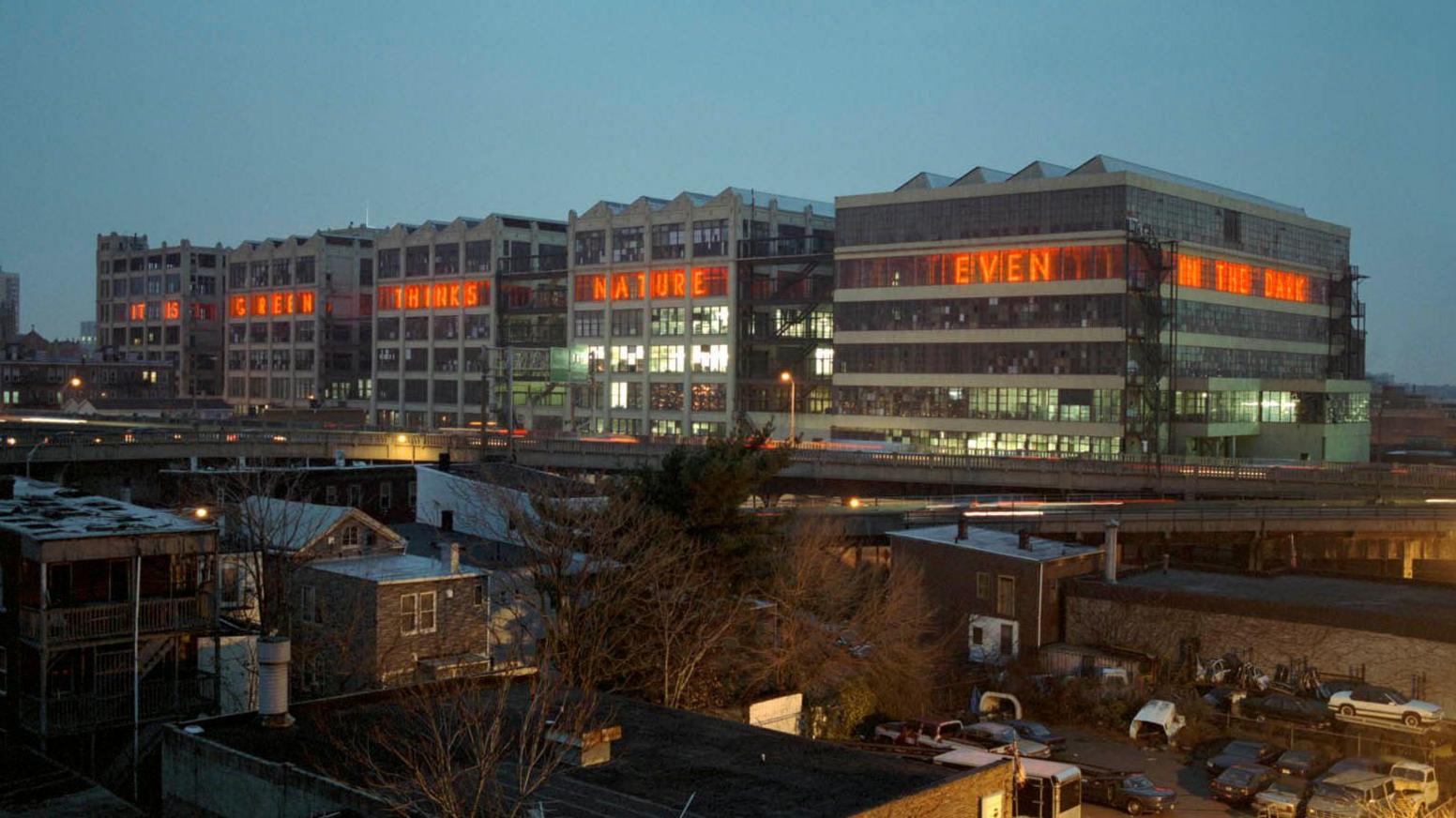
The original installation in New Jersey was different from Glasgow's
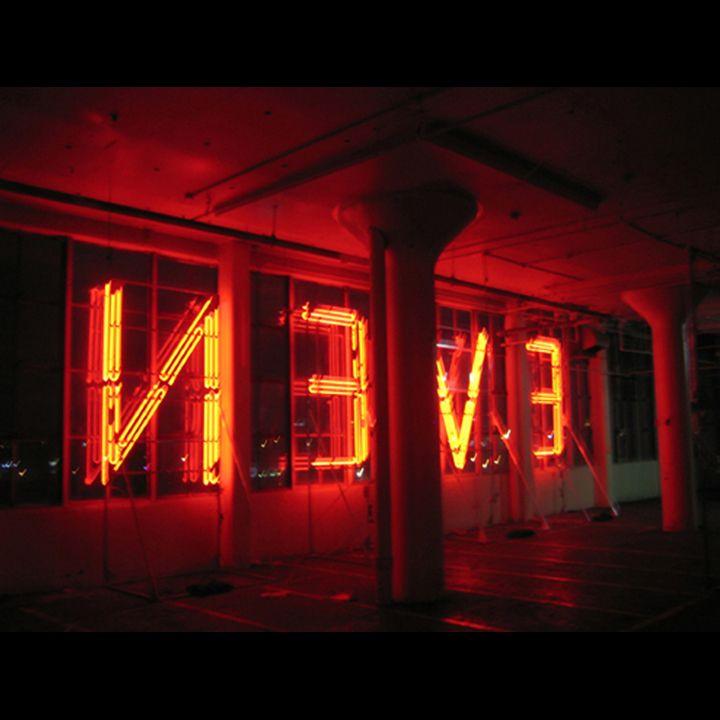
A behind the scenes look at the New Jersey installation in 2006
Why Glasgow?
Mary Ellen attributed many reasons for why Glasgow was chosen.
She cited its industrial past compared to its "forward thinking" future - and of course the city is known as the "Dear Green Place".
She says COP26 was a unique opportunity to construct the display, and the Schoolhouse site was chosen particularly due to its visibility.
The refurbished schoolhouse is owned by Joe and Lesley Logan of Logan Factoring Ltd, who donated their rooftop space to Mary Ellen.
The space below the sign used to be a rooftop bar but this is currently closed.
The installation did not require any planning permission due to "relaxed rules" at the time of COP26, according to the council.
Mary Ellen said she hoped that "indestructible language" had become part of the city and that it encouraged Glaswegians to keep questioning what exactly it means.
Because although she lives over 3,000 miles (5,000km) away, Mary Ellen's words remain glowing across a city for each individual to give their own meaning.
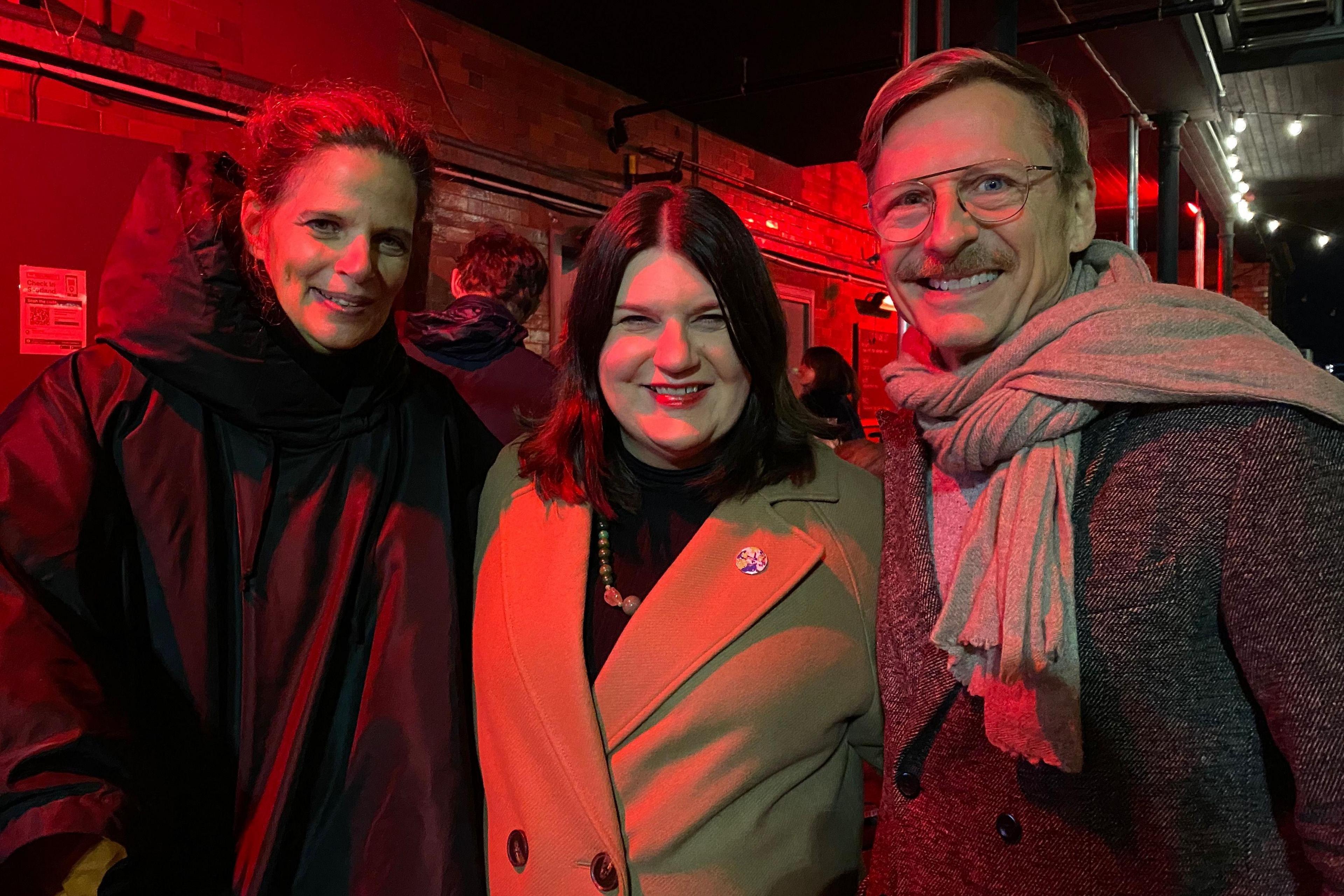
Mary Ellen met council leader, Susan Aitken and American architect, Charles Renfro during COP26
More like this story
- Published5 October 2021
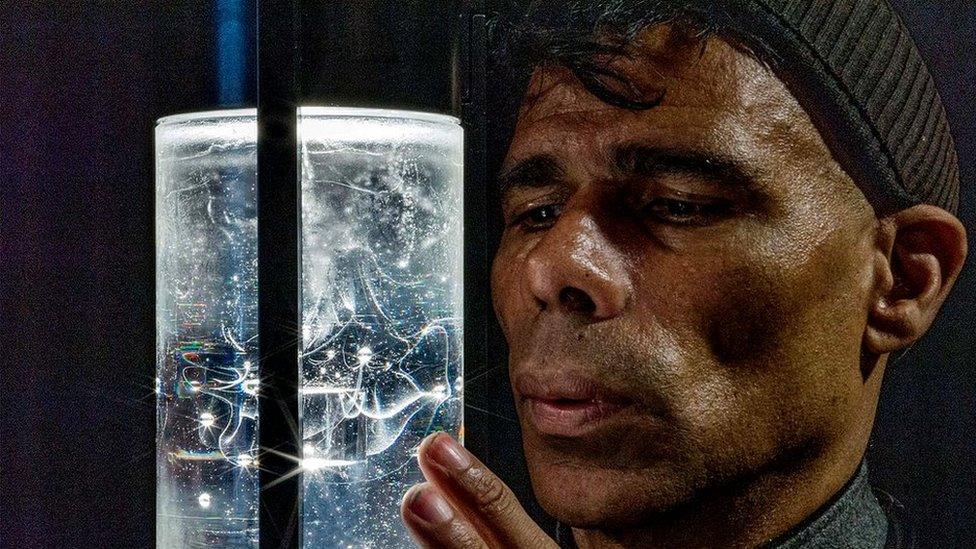
- Published10 November 2021
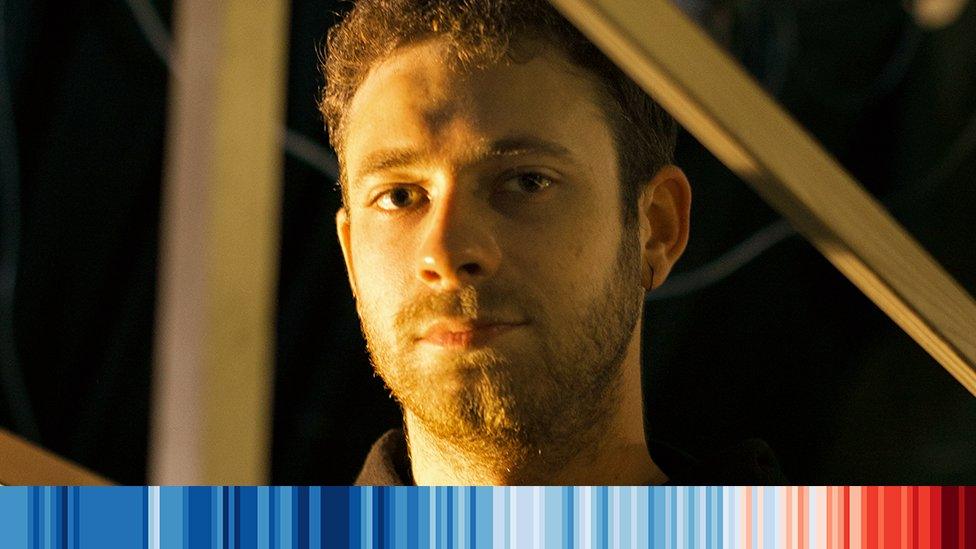
- Published13 November 2021
